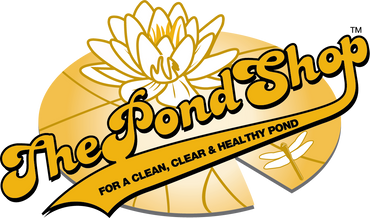Naiad

Naiad or Southern Naiad is found throughout the United States, it prefers still or slow-moving water with depths of 3 to 15 feet. Southern Naiad can tolerate polluted or slightly brackish water and a variety of sediments. The Stems of southern Naiad plants are very long and have many branches. Its leaves are deep green, less than 1/16 inch wide with tiny teeth along the margins. Naiads leaves are arranged oppositely on the stem and sometimes in whorls of three. The flowers are submerged, very small and unobtrusive. Southern naiad seeds and foliage are an important food source for wildlife, especially shorebirds and waterfowl. Modest growth of southern naiad is generally desirable for the pond ecosystem. However, these plants can become troublesome in ditches, and human-made ponds where they can become locally dominant and reduce dissolved oxygen levels leading to fish kills when they die in the fall. In larger water bodies, dense submersed mats can interfere with recreational activities.
Excessive growth of naiad and southern naiad is a symptom of the high content of nutrients.
Prevention
Naiad and southern naiad fragments very easily when pulled and can spreads very quickly during the growing season. Detached parts can root in the bottom or survive freely suspended in the water column. Water currents, waterfowl, and human activities can disperse plant fragments to new areas. When using water facilities such as ponds, lakes, rivers; make sure all clothing, boats, trailers, and any related equipment are free of plant material prior to leaving. Clean and flush watercraft to rid them of any plant contaminants. Nutrient availability in the sediment will feed its growth.
Biological Control
Beneficial Bacteria products and enzymes such as PZ900 feed on nutrients in the water making them unavailable for plant growth. Reducing nutrients can help prevent invasion.
Physical/Mechanical Control
Repeated mechanical harvesting or cutting can help reduce densities and seed banks, but escaped fragments can drift elsewhere and develop into new plants. It is important to remember that clearing up plant remnants will help avoid reestablishment and extra work later on. Naiad and southern naiad both have robust spines that can scratch the skin. Physical removal in conjunction with chemical control will maximize success.
Dyes and colorants reduce aquatic plant growth by limiting sunlight penetration and reducing photosynthesis.
Aeration has also been used as a mechanical approach to hinder pondweed proliferation. The added oxygen will accelerate the decomposition process of nutrients that pondweeds need to live.
Chemical Control
When used carefully according to the label instruction, aquatic herbicides can be safe and effective management tools. The products that have been successful in treating southern naiad individually or in combination are Reward and Weedtrine D, Aquathol K – liquid, Aquathol Super K – granular, Propeller, and Sonar AS and Sonar RTU. A nonionic surfactant Cygnet Plus should be mixed in solution with herbicides when plants are treated.
Reward is a fast-acting contact herbicide, highly effective in killing any part of the plant that comes into contact with.
Weedtrine D is a contact, non-volatile herbicide for use in controlling submersed and floating aquatics weeds. Weedtrine-D has rapid absorption and herbicide action.
Aquathol K (liquid) is a concentrated, highly soluble contact herbicide, effective against a broad range of aquatic plants.
Aquathol Super K (granular) this contact herbicide has been effective on pondweeds and can be mixed with copper compounds for additional efficiency.
Sonar A.S. is a long-acting systemic herbicide ideal for water bodies with minimal flow. Simply mix Sonar A.S. with water and spray throughout the surface of the water or pour in different spots around the pond. Sonar A.S. does not have water use restrictions.
Sonar RTU is a long-acting, systemic, easy to use herbicide. Sonar RTU does not require mixing, simply open the bottle and treat from the shoreline.
Propeller is a broad spectrum, fast acting contact algaecide/herbicide. It comes in a water dispersible granule that mixes with water to be sprayed or pour. Propeller should be applied to actively growing plants or algal blooms.
Cygnet Plus is a nonionic wetting agent, sticker, activator and penetrant all in one. Cygnet Plus increases the effectiveness of herbicides uptake into the plant tissue.
